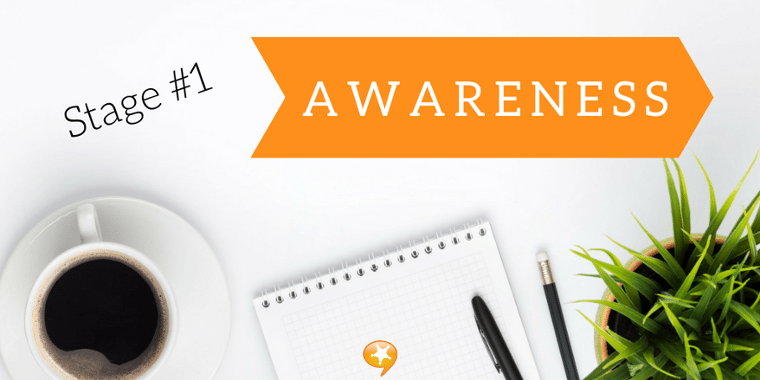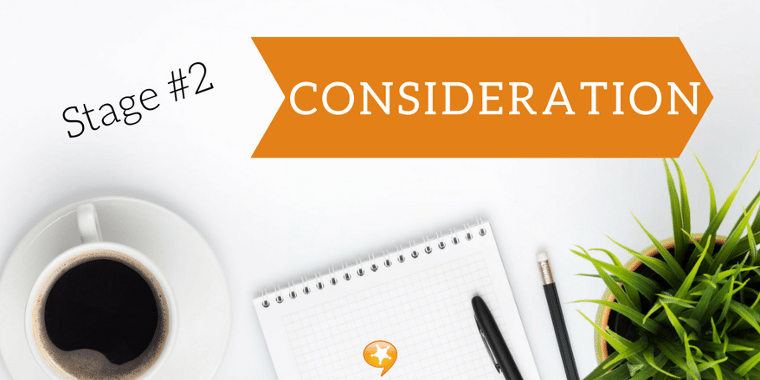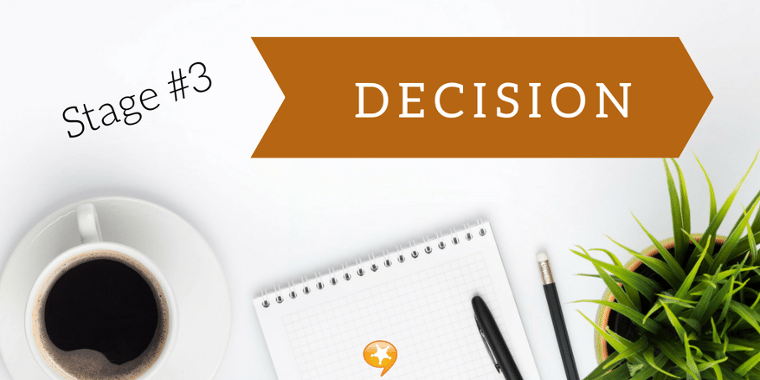As you may have heard by now, we’re going through different types of content mistakes you could be making on social media and how you can fix them. So far, we’ve covered knowing too much about yourself, and not knowing your competition. What else could there be?
A critical part of inbound marketing is knowing where your prospective customer is in the buyer’s journey and aligning your content to each stage. This way, you are better able to understand what type of information they are looking for, deliver it, and move them further along in the process.
With traditional marketing methods of the past, salespeople held all the information the buyer needed to make a purchasing decision. The Internet has forever changed the buyer/seller relationship because, now, the information buyers are looking for is right at their fingertips.
The buyer now holds all the power. ![]()
Just like the buyer’s process has transformed, so has the sales and marketing process. Inbound marketing is the answer to today’s empowered buyer. By providing relevant information to the buyer in the right stage of the sales process, you’re able to increase the amount of visitors, leads, and customers you convert.
Definition
What exactly is the buyer’s journey? According to HubSpot, the buyer’s journey is “the process buyers go through to become aware of, evaluate, and purchase a new product or service.”
Here, they’ve broken down the journey into three different stages. We’ll go into each stage in a moment.

Defining your company’s buyer’s journey
Not all buyers’ journeys are created equal, because not all companies are solving the same problems. In order to gain a better understanding of your buyers, you’ll need to interview customers, prospects, and salespeople at your company. Ask questions like:
- How do buyers describe their goals and challenges?
- How do buyers educate themselves on these goals or challenges?
- What categories of solutions do buyers investigate?
- How do buyers perceive the pros and cons of each category?
- When buyers investigate your company’s offering, what do they like about it compared to alternatives? What concerns do they have with your offering?
- Do buyers have expectations around trying the offering before they purchase it?
Once you’ve gathered enough information about the process your customers go through to purchase your product or service, you can begin tailoring your social content to each of these stages of the process.
The Stages

The awareness stage is where buyers identify that they have a problem or challenge that needs to be solved, whether or not they want to pursue a solution, and if solving this problem is a priority for them.
The research they will be conducting during this stage will be focused on vendor neutral information from third parties that identifies the problem or symptoms of the problem. They will be using search terms that include words like “troubleshoot,” “issue,” “resolve,” and “improve.”
Avoid This Mistake: Promoting a Solution
Buyers in the awareness stage are just discovering more about the nature of the problem they’re facing or the situation they are in. This phase is focused on investigation rather than long-term or proactive problem-solving. Avoid giving product-focused content, client testimonials, and case studies to buyers who are simply looking for information about their problem. Even though you want them to choose your company’s product, they are simply not ready to make that decision.
Do This Instead: Educate
Provide content that focuses on education. Show buyers that you understand the problems and challenges they face. People that are in this stage of the buyer’s journey will be visiting your blog and interacting with your social media content. They are looking for answers, data, insights, and education, so tailor your content to fit those needs.
Here are some types of content you can include:
- Educational blogs
- Analyst reports
- Research reports
- Expert content
- White papers
- Other educational content

In the consideration stage, buyers have already determined the problem or challenge they have and decided to pursue a solution. They will now be looking a different approaches or methods available for solving their problem.
Buyers will have likely narrowed down their choices to a few companies, and will begin researching more about each one to determine which offer the best solution.
Avoid This Mistake: Selling Your Company
Now that your buyer is committed to addressing their problem, they are going to evaluate the different methods available for solving it. They have not decided to go with your company yet, so avoid overwhelming them with sales pitches.
Do This Instead: Spotlight the Solutions
Help them research ways to solve their problems. Buyers will want to compare multiple companies, and you can provide information that helps them do that, which will not only begin to spotlight your company and prepare buyers for the decision stage, but will also further establish your company’s thought leadership in your industry and build trust.
Offer these types of content:
- Comparison white papers
- Expert guides
- Podcasts
- Videos
Remember, content during this stage should focus on the solutions, not sales.

The final stage of the buyer’s journey is the decision stage. This is where buyers have decided what solution best fits their needs and will start thinking about making a purchase.
In this stage they will research data, benchmarks, and endorsements in order to make their final purchasing decision. The content you’ll want to provide them with should help them make their final decision.
Avoid This Mistake: Failing to Demonstrate Fit
Finally! This is where you get to show (not tell) how working with your company will help them through their current situation, as well as help your customer succeed in the future. This is no time to hold back on demonstrating the full value of a partnership with your company, nor is it the time to talk more about their problems or the research on how to fix those issues (you did that in the first two stages).
Do This Instead: Make Them Happy
Think about this: Why does your customer NEED to work with you? Have you helped people in similar situations? Do you have a recognized team of experts? This is where you explain how the partnership will benefit your customer. Remember, to always stick with client-centric language (talk about making their business succeed instead of touting your own success).
Some types of content you can provide are:
- Product comparisons
- Case studies
- Customer testimonials
- Product literature
Even after they have made the decision to buy the product or service your company offers, they will still be looking for best practice and implementation guides to make sure they’re ready to get started using it. Providing these pieces of helpful content ensures effective and efficient use of your product or service, as well as buyer loyalty.
Get Started
Now that you know how to nurture a prospective customer through the buyer’s journey, get started by developing your company’s own buyer’s journey!
